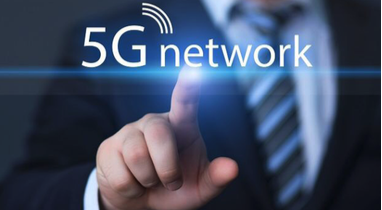There has been quite a bit of discussion and some excitement around 5G coming and what that might mean for us here in New Zealand.
Firstly, what is 5G. Simply 5G is the fifth- generation mobile network. In 1987 1st generation was deployed in New Zealand and this was all about voice, 2nd generation in the 90s was digital enabling text, 3rd and 4th generations were all about data. 5G is all about the data as well but has some unique characteristics that really do take it to the next level.
The real excitement around 5G is the increase in speed and capacity as well as low latency. Downloading a HD movie in about 10 seconds compared to around 10 minutes using 4G. Initial trials in New Zealand have indicated speeds of 9 Gbps outdoor to 19 Gbps indoor and latency of around 10ms to potentially 1ms against current latency of around 50ms.
Those impressive numbers mean applications that currently require low latency and which are data heavy will now be able to be carried out remotely enabling a new generation of remote applications.
This is where the benefits of 5G will be realised, its ability to enable remote working where it couldn’t be done before due to the nature of the business. This could translate into the ability to access data in the field through Augmented Reality (AR) which at the moment may be too data hungry or low latency dependant. More on this later.
Globally 5G is being developed and deployed in many countries, as I write this Verizon in the US (Indianapolis) has deployed a 5G network (although not on international 5G standards) this week and have released it to the consumer market through consumer wireless broadband plans.
South Korea is poised to be the first country to deploy 5G completely. South Korea’s three main operators are banding together to deploy 5G services by March 2019, making it the first country if they meet that date.
The Europeans have set up a 5G Action Plan aimed at aligning roadmaps for a coordinated deployment across member unions.
New Zealand is set to deploy by 2020 through Spark. There are some challenges to meeting this timeframe, notably no spectrum has been allocated for 5G and while Spark as a temporary licence they would want that to be permanent to commercially deploy in New Zealand.
In order to have New Zealand completely 5G there will need to be, as in other countries, cooperation between operators in order to gain coverage. One of the advantages of 5G is the ability to build out from the cell site with micro sites (like commercial Wi-Fi sites). This could mean faster deployment in urban areas. Then they would push out to regions similar to what happen when 4G was deployed.
The benefits of 5G that we know of today is its ability to support far more connected devices and this is done quite smartly from a network operators’ perspective. With the world connecting more devices than before the 5G network provides many benefits to enabling and supporting those devices.
From the new network we will see proliferation of smart devices, from street lighting to smart power meters and new smart home services, real time fright tracking and logistics to supporting near instantaneous communications across all industry. It will provide end user businesses the environment to develop beyond the office to provide better customer experiences. We could see the real prospect of remote surgery being commonplace, as an example.
I mentioned before AR. 5G should enable field workers to, in real time access complex detailed content that enable tasks to be completed with the assistance of AR technology, 5g enables much larger amounts of data to be carried and lower latency meaning AR can be a practical tool rather than a novelty.
From a consumer perspective, it’s likely we will move away from mobile or home wireless plans that cap data. That will mean 4k rich content on any device (note no 5G capable mobiles have been manufactured yet) and opening the opportunity for 8K content down the line.
From previous experience the true benefits of the network are generally not known at the initial stage of deployment. When 4G was launched, wireless broadband and unlimited mobile plans were not considered but both have since become significant products driven by the adoption of media entertainment like Netflix and Spotify.
It’s natural that entrepreneurs and businesses will develop new applications that leverage the new network and its exciting to be a participant in that process. From a local perspective I would certainly like to see the new network provide some economic benefits for the Hawke’s Bay and given the entrepreneurial of businesses in the Hawke’s Bay I’m sure we will be keen to see deployment here as soon as possible.


